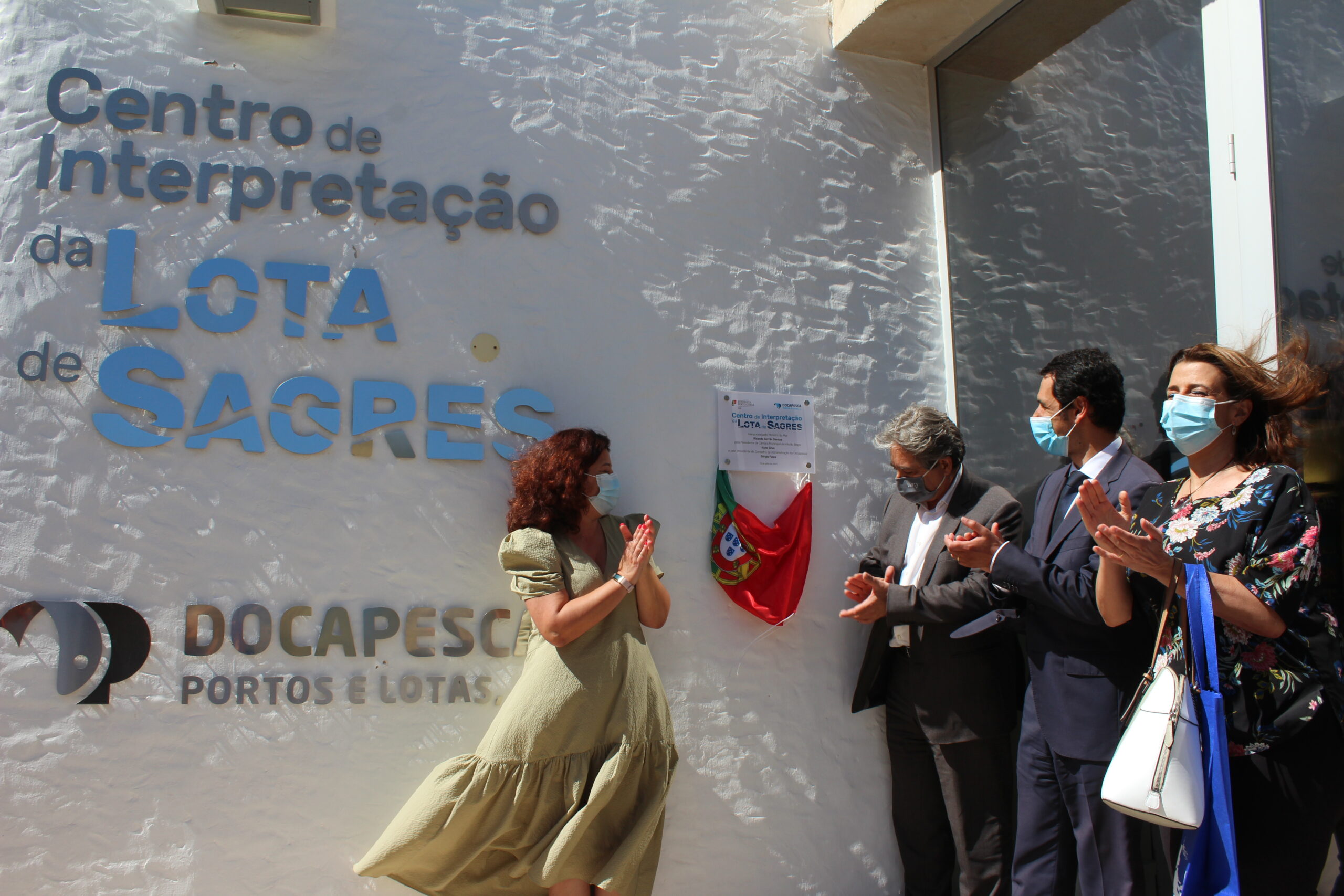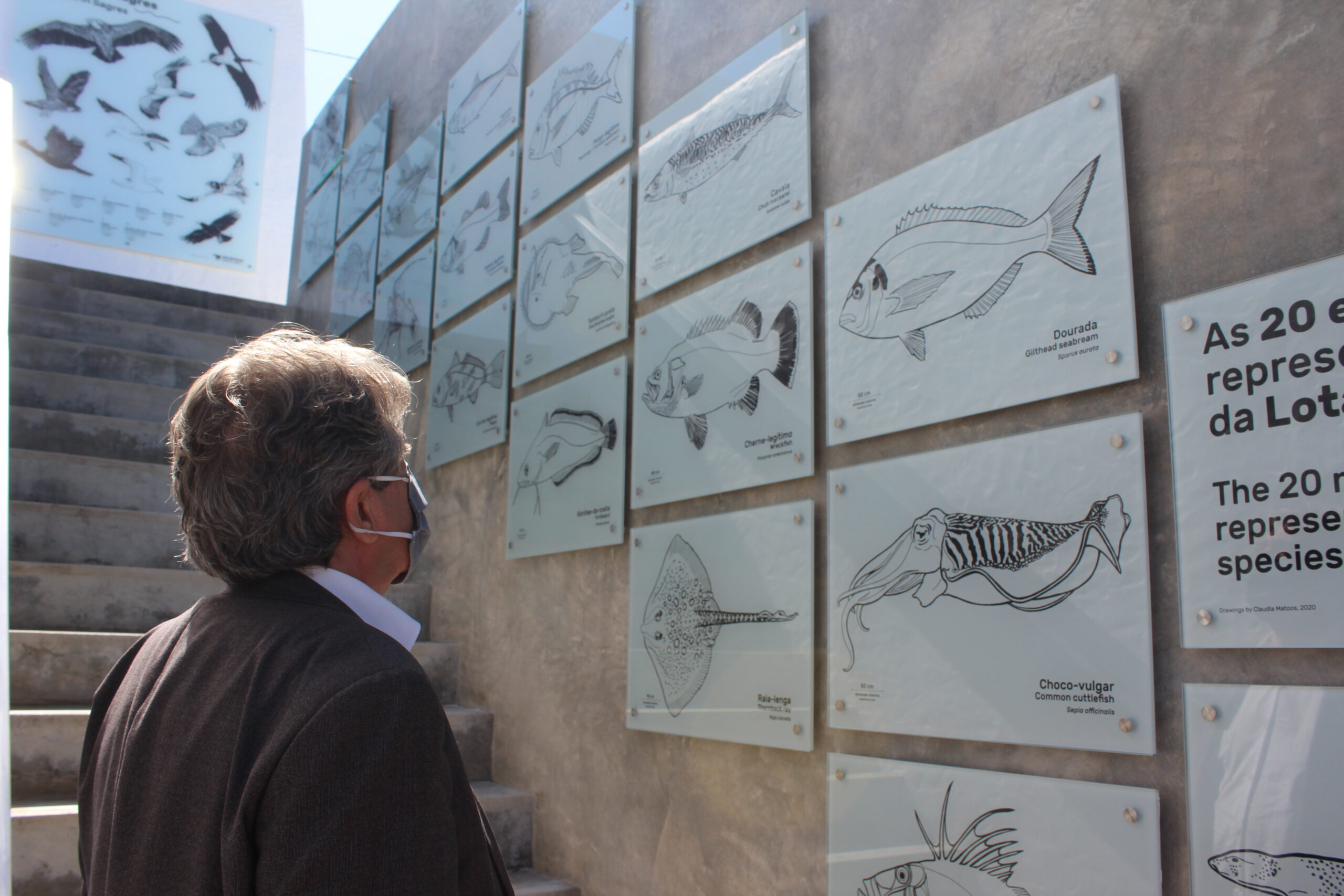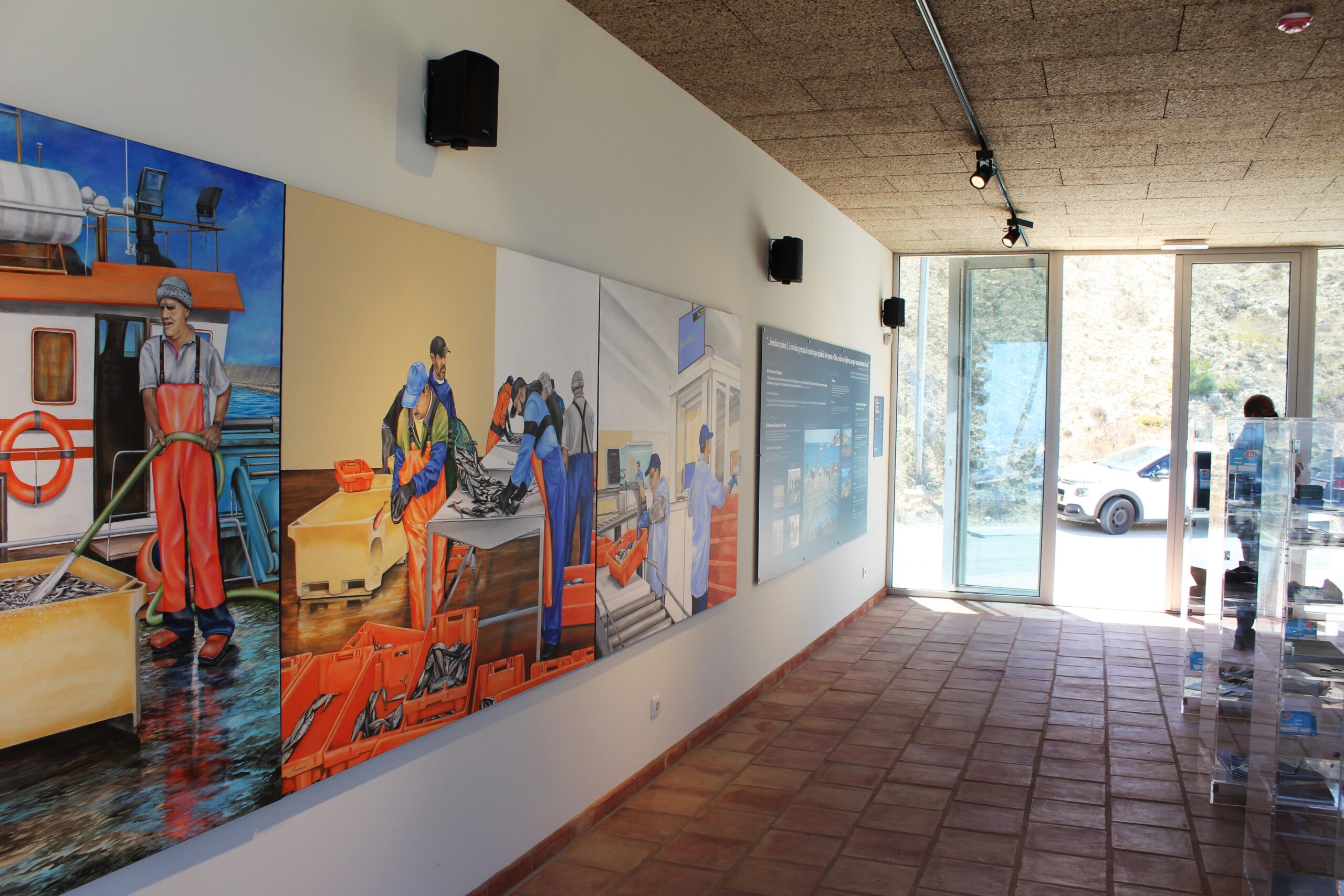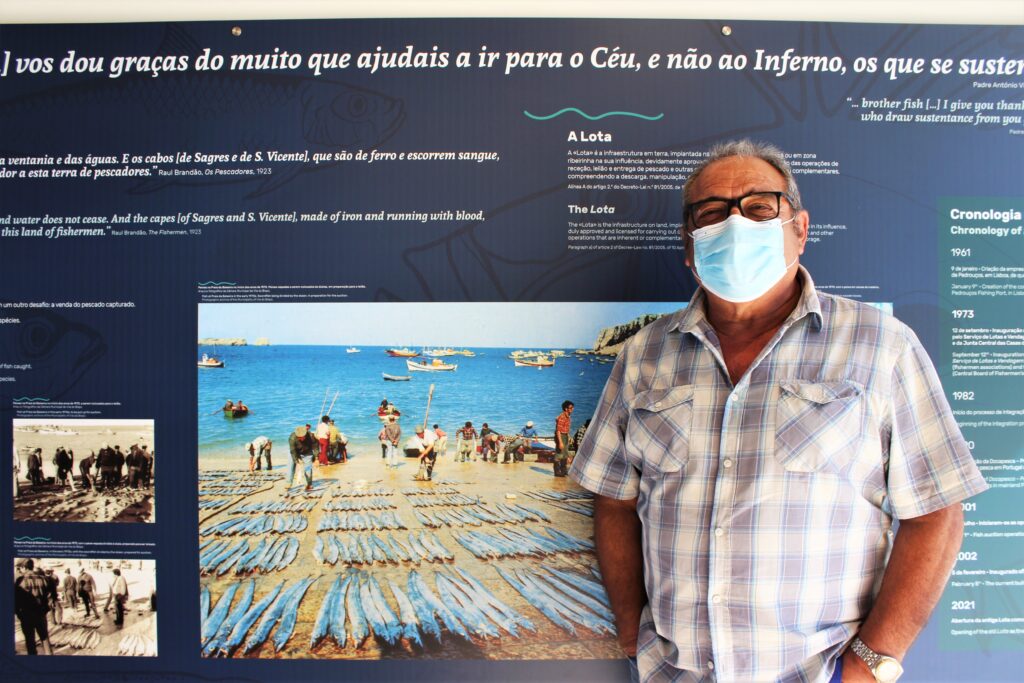The life of Mário Galhardo, a fisherman for 46 years, has always been the sea of Sagres. The times when, as a child, he helped his father were “difficult, hard, but also fun and interesting”. To keep memories like this alive, the former Lota de Sagres was transformed into an Interpretation Centre, with postcards, photographs, phrases by fishermen like Mário who worked there and even excerpts from literary works.
At the entrance, just to the right of this new space, inaugurated on the 13th of July, Raul Brandão appears.
«The eternal lamentation of the wind and the waters does not cease day and night. And the capes [of Sagres and S. Vicente], which are made of iron and flowing blood, insist on pointing out their painful fate to this land of fishermen».
The phrase, by the author of the book “Pescadores”, summarizes what life in Sagres is all about – and that Mário Galhardo knows so well.
"I remember perfectly well this fish auction in operation, the people who worked here, the fishermen who sold here", he tells the story of Sul Informação.

On the wall behind Mário, in addition to an excerpt from Raul Brandão's work, there are photographs that show what the sale of fish on the beach was like (even before the auction...), as well as a chronology that tells the story of the old auction in Sagres, opened in 1973 and deactivated in 2001.
“I have very vivid memories of my father, seeing him here. And the fish, some weighing 70, 80 kilos? Chernes, swordfish, it was loads! Those were difficult times, but the truth is that I miss this a lot too», he confesses.
In addition to two rooms, with photographs, phrases, images of old utensils, this Interpretive Center extends onto the terrace of the old fish market. There, in addition to the view of the Baleeira port, it is possible to discover the 20 most representative species of Lota de Sagres.
The sea bream, grouper, hake, ray-lenga, cuttlefish, anglerfish, snapper, lobster or sea bream are represented.
And much more “there was to choose”, reveals the researcher Cláudia Matos, one of the coordinators of the project that allowed the installation of this Interpretive Center.

Also on the terrace, there are two other reasons of interest: a panel with 10 birds that can be seen in Sagres (such as the griffon vulture, the yellow-legged gull, the black kite or the alcatraz) and another one that speaks of of the geology of Praia da Baleeira.
But that is essentially a space dedicated to life at sea. Today, recalls Mário Galhardo, fishermen's lives are “completely different”, easier, less hard.
«Creating this Interpretive Center was a very good work. This was closed and became an open, living space, a museum. It was a shame to be closed and it is important for the locality to have knowledge of the old experiences», he considers to our newspaper.
The idea, moreover, came from Docapesca, which also did the work with “memories in mind”.
“Our goal was to open this space again for the community. It is, in the end, reliving the past, remembering what the present is. The voices that echo on these walls could not remain silent», explains Sérgio Faias, president of Docapesca, to the Sul Informação.
After the work has been completed, it is the Vila do Bispo Council that will take over the management of the space, something that “we accepted from the outset”, says Rute Silva, president of the municipality.

She, who is from Sagres and the granddaughter of a fisherman, explains how having the old fish auction open is “important not only for the population, but also for tourists”.
“With this, we can also develop heritage and environmental education activities”, he adds.
For now, the Interpretative Centre, which was visited by the Minister of the Sea at its inauguration, is still not open to the general public, something that should happen "in August", since there are "some details to adjust".
Admission will be free so that everyone, without exception, can travel back in time and learn about the stories of a auction that was also marked by the corner of the auction.
On one of the walls, José Alberto Gerardo remembers his work.
“To auction the fish forced to speak loudly. It took many years to speak loudly. They said I spoke loudly…Drying my tongue…Drying my mouth. Over time, we got to know the buyers and their signs. Some made signs with their eyebrows; others raised their heads, others shouted: "Chuí!"




















Comments